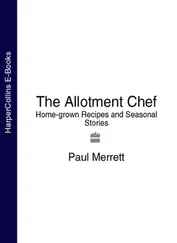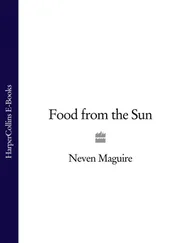Herbs: leftover fresh herbs can be put in strong plastic bags and stored in the freezer. They’re ready for cooking with at any time, so when you need them, just pull off a handful and crumble into the pan – no need to chop
Bread: most bread freezes very well, particularly in individual slices ready for putting straight into the toaster
Stock: freeze stocks in 600ml (1 pint) rigid plastic containers and allow to thaw before using
Galangal, kaffir lime leaves and curry leaves: freeze any leftovers in small strong plastic bags and use straight from the freezer
Garden peas
Vanilla ice cream
Pastry: puff, shortcrust, filo and kataifi (for more info see pages 70 and 216)
Spring roll wrappers
Wonton wrappers
Baking powder
Bicarbonate of soda
Flours: plain, strong plain, self-raising and wholemeal
Dried yeast sachets
Spaghetti
Pasta shapes e.g. penne / tagliatelle (I prefer the De Cecco brand)
Egg noodles
Rice: long grain, basmati, risotto and organic brown
Couscous
White beans, such as haricot
Polenta
Dried mixed wild mushrooms
Popcorn kernels
Digestive biscuits
Plain chocolate (at least 70% cocoa solids)
Sugar: caster, light muscovado and icing
Stock cubes (The Kallo brand are good and also low in salt)
Maldon sea salt
Herbs and spices: black peppercorns, ground cumin, coriander, paprika, cinnamon, Chinese five-spice, cayenne, dried chilli flakes, curry powder and paste, cloves, saffron and vanilla pods
Dried fruit: raisins/sultanas, apricots, prunes
Nuts: flaked almonds, pine nuts and pecan nuts
Sesame seeds
Herbs contribute hugely to my enjoyment of food. I use them to add scent, flavour and colour to almost every dish that I produce in the kitchen. It’s hard to imagine cooking without them. The flavour of each herb comes from the essential oils stored in its leaves, stems and flowers, which are released as the leaf is cut, torn or heated. To illustrate this, pick a leaf of basil, sage or tarragon and crush between your fingers. Notice how much more pungent and powerful the smell becomes. I’d like to say I grow all my own herbs, but I am lucky enough to have two local organic growers who deliver to me regularly. They pick the herbs at about 6.30am, when the plants are holding the most moisture. However, I do grow some mint in the garden and always have a pot of basil on the windowsill in my kitchen. Always add chopped herbs right at the end of the cooking or they will discolour and their flavour may change. I keep herbs in a bowl of water until the last minute to prevent them wilting.
No other herb brings the flavour of Mediterranean cooking into your kitchen in quite the same way. Its warm, spicy smell and flavour livens up a tomato salad, or it can be pounded with Parmesan, pine nuts and olive oil to make pesto (see page 208). If you are using it raw, it is better to shred the leaves by hand as this helps retain the flavour. There are several varieties: sweet, which I cook with; purple for garnishing; Napolina, which has leaves nearly the size of your hand and is best for pesto; and Thai holy basil (basil in name only, as not technically from the same family), which is perfect in oriental dishes.
The strong and distinctive flavour of bay is best released by lengthy cooking. It is part of the classic bouquet garni. We use bay leaves in court-bouillon (see page 34), stocks (see pages 218-19), casseroles and pot roasts.
Its delicate anise flavour is ideal in salads, soups, stews and sauces. Use in any recipe calling for ‘fines herbes’, and with white meat. Excellent in herb butter. Avoid prolonged cooking as this destroys the flavour and colour.
Use in dressings, as a garnish or chop into summer salads. The flowers look great in salads. Chives are essential in potato salad and can be used in egg dishes or to flavour butter for barbecuing. They tend to discolour, so add at the very end of cooking. Onion- and garlic-flavoured chives are also available.
1. Basil
2. Chervil
3. Chives
Use in Middle Eastern and Asian dishes. It’s especially good scattered on top of curries, and is best added towards the end of cooking. The roots and stalks can also be ground down and used in curry pastes and marinades.
This has a mild caraway flavour and is best added just before serving. Use in fish marinades, sauces, soups and salads. I also find it particularly good with potatoes, chicken, fish and egg recipes.
This has pungent leaves and flowers. Hang small bunches in a warm, dry place to dry out, then store in labelled screw-topped jars in a dark cupboard and use in homemade tomato sauces or to flavour tomato pulp for pizzas. Marjoram makes a good addition to a marinade, particularly for fish. We use fresh marjoram in the restaurant as part of our special herbal tea – a wonderful mixture of bronze fennel, apple mint, lemon thyme, lemon balm and marjoram. The tea aids digestion and has the most fantastic fragrance.
4. Coriander
5. Dill
6. Marjoram
Many flavours of mint are available, including peppermint, ginger, apple and pineapple. Toss with new potatoes or peas, or serve as a sauce with roast lamb. It is wonderful in summer drinks and fruit salads or serve with ice cream and your favourite summer berries. We serve freshly brewed mint and peppermint tea in the restaurant and both are very popular.
There are two kinds of parsley: curly parsley and the continental flat-leaf parsley. Both have a vivid green colour and although the continental variety has a more pronounced flavour, they can be used interchangeably in almost any savoury recipe. Parsley is the most used herb in my kitchen. Finely chop with garlic and mix with butter to put on top of mussels, to flavour grilled meat or fish, or simply to mix with vegetables.
7. Sage
8. Rosemary
9. Tarragon
This old-fashioned salad herb is enjoying a great revival. It has a spicy flavour and makes an excellent simple salad or can be quickly cooked in a little olive oil. In Italy it is often served with carpaccio: thin slices of raw beef with Parmesan shavings and a dribble of olive oil (see page 92) but it is equally good with slices of smoked salmon.
A very strongly flavoured herb, so use sparingly. It’s often finely chopped in stuffing for poultry, meat and game. I also like to insert sprigs into roast lamb or pork – remove them before serving. Occasionally we use rosemary in sweet dishes such as creams, custards or poached fruit (such as pears).
Not subtle, but very versatile, this can be used fresh or dried and is excellent combined with tomatoes, olive oil and garlic. It works well with fatty meats like pork or duck, or, as is traditional in Italy, with offal such as kidneys and liver. Some of the best stuffed pasta dishes of the Italian Modena region are served simply with melted butter and sage leaves.
Its delicate aniseed flavour goes well with chicken. Considered by the French as one of the most important culinary herbs, this is an essential ingredient of béarnaise sauce. A few sprigs make a nice addition to pot-roasted chicken, or infuse in vinegar to make a vinaigrette.
Читать дальше












